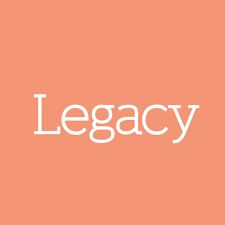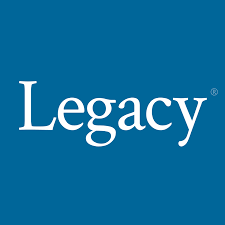Get Organized
Lou Jones (Lou's website) and I started to meet several years ago to discuss legacy issues. Lou from his professional and commercial side and me from the artists' perspective.
We became Photographers Legacy Strategies (PLS) and we formed a group that would be representing a variety of fields related to overall legacy issues for working pros and career artists, specifically in photography.

We mapped out many different scenarios, from the career pro or artist to the hobbyist, from a few albums or stills on a cd, to literally thousands of negatives made over a long career.
Example: Let's imagine you are 57 years old and are finally able to exercise your passion for making pictures as the kids are gone and you have time on your hands. Over a few years of travel and picture making you accrue quite a bit of work, self publish a couple of books, make prints, have work framed and show it locally, enter some contests and win some prizes. While you like all this and plan on continuing, you also know that this time will end, you will age, be less able to make new work and want for the best work you've made to survive after you die. You bequeath this work to your husband/wife and if he/she dies before you, to your children. The question, of course, is what does your partner or your children do with it? Keep it in boxes in the basement? Donate it to the local library or historical society? What about your files and/or negatives? What about your equipment? Do your heirs know where your work is, what this or that project is about or the circumstances in which you made it? Do they care? You get my drift. This is a big topic of importance to the photographers, those that inherit their work, and perhaps museums, galleries, publishers and archives.
Example: Over your long career, you have amassed an archive and library of works that now exist as archivally printed portfolios, initially as analog darkroom prints you made yourself and then inkjet prints after you began working digitally in the early 2000s. In addition, as you collected works or traded with colleagues, you have a large collection of really first rate work by other artists, mostly photographs but also other works on paper and canvas. Your teaching institution will take some of your archive and your children will as well, but the largest share of your work will sit unclaimed and un-aquired. As you are an internationally known artist with work in many prestigious museums you were shocked to find that no one wanted it. You are worried about what will come of it as your surviving three children will inherit but have wildly different views about your work, its worth and none are inclined to want to spend time parceling it out to the few museums that might take it. You have visions of most of your life's art ending up in a dumpster somewhere.This is not unrealistic.
PLS was::
-Paula Tognarelli, Executive Director of the Griffin Museum
-Lou Jones, wonderful professional photographer, artist and member on several boards of non profits
-Elin Spring, photographer and blog author of "What Will You Remember"
-Andrew Epstein, a long-time lawyer and friend for many photographers and head of PhotoLaw
-Jennifer Uhrhane, photographer, curator and collections management consultant
-Me, you know about or can find out on my site www.nealrantoul.com
Our mission statement was:
Photo Legacy Strategies (PLS)
Photo Legacy Strategies assists photographers and their heirs with organizing, archiving and managing their photographs for the purposes of scholarly research and teaching, exhibitions, donations and/or sales by providing them with the resources and expertise to fulfill their intentions for the future use of their work.
While we had a URL, our site never was up and running. Our plan was to become a resource for the broad umbrella known as "legacy issues". We prepared a list of steps that outlined what people needed to do to plan for their own demise and conducted several interviews with prominent photographers to understand better what photographers faced or had faced before they died. Our intent was to provide a service to help with these issues.
Heady stuff, this. While I have no answers I did want to leave you with this:
The main message: If I've learned anything in the past it is to get organized. Nothing can happen without this crucial first step. You've worked hard and made incredible photographs and justifiably want this work preserved after you die. Then make it so. Go through your archive and discard secondary work, unfinished projects, work prints and uncatalogued works. Compile a database of the works you will be bequeathing and where you want those projects to go. Clean up your workspace, file away negatives by year and or/projects. Spend the time and money to protect important works in flat file cases with archival materials. Assure that the storage of your work is not in a damp, moldy, leaky space. This surprises some but give work away. Made some pictures that a local town library or historical society would love to have? Donate the work to them. Make sure your heirs get to choose what they would like and make sure you designate that the work will go to them, or give it to them while you're still around.
Many asked us about the value of their negatives or their digital files. In truth, unless you are regarded as the most important person in the history of the medium, they won't matter much. Nice to have them and an important part of your legacy but making prints is where most of your efforts should be. When you make the prints always sign them for they are worthless without your signature.
As many of you have only worked in the digital world, or have switched to fully digital like I have, you have terabytes of files lying in your Lightroom catalogs. Great. Presumably you've got back ups in hard drives or RAIDs, and back ups for the backups. But, imagine this, the worst happens, you die. A month after the service, the burying, the commiserating notes and flowers are gone, the donated food is cleared out of the fridge and the closet is emptied of your things, your heir sits at your computer to see what there is to do. And they are confronted with an overwhelming task. Do they unplug it all, disconnect various Lacies, Drobos and Seagates, monitors, keyboards, etc. and move it all to the basement? I interviewed the surviving wife of a photographer. When confronted with this issue she gave the full computer with back-ups to a 12 year old nephew who wiped everything clean to make room for more video games. Or, the assigned curator or your heirs walk into your workroom, your studio, your storeroom, to find stacks and boxes of prints and negatives, nothing to tell what they are or what they are a part of, no backstory explaining how the works fit together or are placed into a trajectory of your's life creative output. Imagine the task. Difficult and wrenching though it may be they are faced with what to do with all this stuff. If you've got your act together before you die, you are aware of this problem and make prints of the works that are important to you. You accompany bodies of work with their written history and geneology. And know this: in all this hierarchy of files and negatives and Tiffs or PSDs, the print is king. They last a long time, they can be stored, filed and catalogued, donated or acquired, collected. They can have value and they are a physical thing made as you wanted, by you. That counts.
Think this legacy stuff is only relevant for the senior set? Think again. What better time to get organized than when you're young, new to this process and don't have so much stuff. Know art is to be your career? Then keep a good record and archive of your works. Sorry if this is heavy handed but do you think of yourself as a professional? Then behave like one.
This can go on and on. Dazed and confused about this overwhelming concept? That's what PLS was formed for. We had hoped to be there to help. Well, that didn't happen. We stopped meeting. All of us are busy people and we had no real motivation to change in mid career and become legacy pros. However, I am doing some limited consulting in legacy issues and you may contact me directly at: nrantoul@comcast.net as I obtained a wealth of knowledge on the subject. Finally, you could join the American Photographers Archive Group (APAG).
Do you want to help? Got any expertise that could be helpful? Legal? Archiving? Storage? Filing? Researching? Editing? Corresponding? Writing? Networking? Get in touch.
What will happen to your work? Do you know?
Neal's email: here

